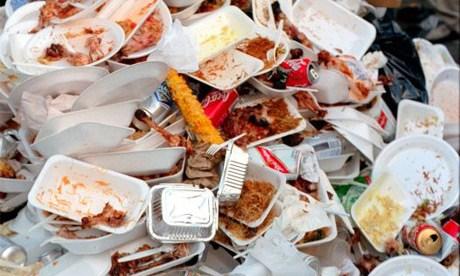
3 minute read
Food Waste: US
Waste Not, Want Not: A Growing Problem of Food Waste in the US By Rebecca Noah
According to the Environmental Protection Agency (EPA), food waste is the single largest component of municipal solid waste that is arriving in landfills and incinerators in the U.S.
A recent study completed by the Natural Resources Defense Council (NRDC) found that 40 percent of food goes uneaten and into a landfill in the U.S. today. Converting that percentage into dollars means Americans are throwing out an equivalent of 165 billion dollars worth of food a year. Meanwhile, as almost half of food purchased is thrown away, one in six Americans lack food security.
To add to the waste, food production requires many valuable and precious resources. Food production from farm to fork uses up 50 percent of U. S. land and 80 percent of all freshwater consumed.
In addition, food sitting and rotting in a landfill accounts for 25% of U.S methane emissions, a greenhouse gas that contributes to climate change.
However, amidst the gloomy statistics about the alarming amount of food Americans waste, experts are trying to begin a food waste reduction movement institutionally and individually in American homes.
Dana Gunders, author of “Wasted: How America is losing up to 40 Percent of Its Food from Farm to Fork to Landfill,” cites ways we can curb our food waste. Beginning in the government, the United Kingdom has implemented a national food waste reduction program aimed at reducing food waste to 50 percent by 2020. Five years later, the program has already reduced food waste by 18 percent. In contrast, the United States government has yet to address this growing problem.
A big issue in food waste reduction is the miscommunication of food labels, which are largely unregulated. Contrary to the common belief ‘use by’ and ‘best by’ dates found on both perishable and non-perishable products do not indicate food safety, they are actually manufacturer suggestions for peak quality of the product. Which means, many Americans are discarding perfectly edible food. Clarifying and creating a regulated standard for these food labels can have a significant impact on reducing food loss.
However, food reduction programs will likely begin and have a large impact locally within state and local government’s and individual homes. Local governments can initiate a reduction plan by developing and instituting municipal composting programs, making it much more convenient for every household to compost. American households can reduce food waste through educational programs that better inform consumers about food perishing and how to reduce waste through more efficiently planning, storing, and prepping food.
Another option to combating food loss is the development of a side–by-side initiative that focuses on both food waste reduction and reusing food waste. One option is to capture the methane produce by the food waste through anaerobic digestion. Anaerobic digestion occurs naturally in the absence of oxygen. Bacteria break down organic materials and produce gases, such as methane. Methane can then be captured in the facility and used as an energy source. Food waste is highly biodegradable which means the methane energy source could be continually generated.
By addressing the issues that contribute to food waste, we can hopefully begin to develop comprehensive food loss reduction programs that can result in less edible food in the garbage, less resources will be wasted, and more Americans will be fed.
You can learn more about food waste and how to prevent it by reading “Wasted: How America is Losing Up to 40 Percent of Its Food from Farm to Fork to Landfill” written by Dana Gunders and issued by the NRDC, which can be found at: http://www.nrdc.org/food/files/wasted-food-IP.pdf











